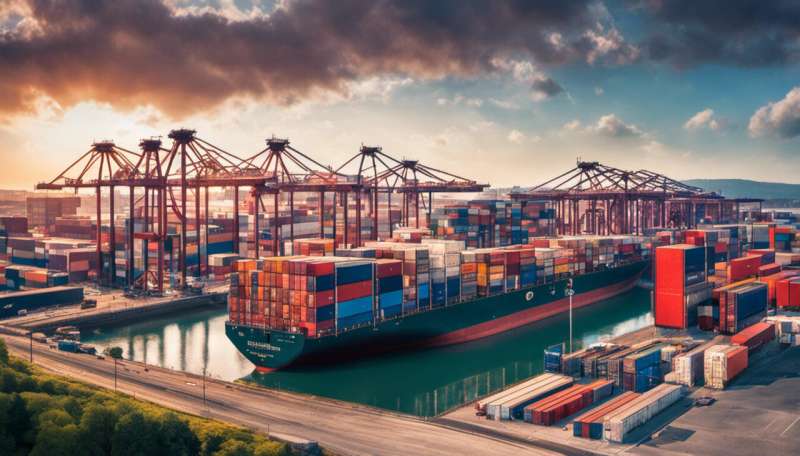Greening Europe's seaports and freight terminals

Sea and inland navigation ports and freight terminals are faced with growing energy costs and major political and societal pressure in terms of their environmental performance.
There are new and stricter air quality standards and regulations coming online, but for the most part today's ports and terminals do not need to be pushed into changing. They understand themselves that there is an economic gain to be had by turning 'green'.
The EU-funded project GREEN EFFORTS ('Green and effective operations at terminals and in ports') is analysing port and terminal processes in detail with a view to developing new solutions reducing energy consumption while promoting the use of cleaner energy at container, roll-on roll-off (ro-ro) and inland waterway terminals.
With goods transport responsible for about 30 percent of the global carbon emissions caused by humans, GREEN EFFORTS is considering the increased use of renewable energies, as well as efforts to get port and terminal personnel actively involved in saving energy. The project will also examine the possibility of using liquefied natural gas (LNG), as well as shore-based power for berthed ships to reduce particle emissions in ports.
Led by researchers at Jacobs University Bremen, GREEN EFFORTS will develop methods and standards aimed at the reduction of carbon footprints at ports and terminals. Importantly, all results will be described in a clear and comprehensible way to foster easy application.
One of the project's key outcomes will be a new information and management tool, the 'Port and Terminal Knowledge Landscape '. This is essentially a virtual 3-D simulator that can model all port operations, from cargo handling to container cooling and provide related information.
The simulator will allow managers to assess any planned measures while calculating their costs and benefits both financially and in terms of productivity.
By focusing on efficiency and sustainability, GREEN EFFORTS is helping ports and terminals to achieve their own visions for 'greener' operations. Additionally to better environmental performance the project will also help port operators provide their customers with more accurate carbon footprint calculations, a key demand within the transport and freight network.
The project is working within a larger research framework that includes other EU-funded initiatives such as COFRET, which is looking at carbon footprints across all transportation modes, from road to rail, inland to deep-water shipping and air freight transport.
GREEN EFFORTS is also active worldwide, capitalising on opportunities to share valuable knowledge and practical experience while strengthening trade relations with key stakeholders in the international port community, from South Asian to Latin America and beyond.
This information allows clients to calculate and publish their own product-related carbon footprint data, with the aim of improving their competitiveness in an increasingly environmentally conscious marketplace.
GREEN EFFORTS has received EUR 2.2 million in EU funding and will run until June 2014. The project's consortium includes major port operators in Germany and Sweden. Along with a number of associated terminals in Europe and Latin America, they will provide the operational data needed and will validate the project's results.
More information: www.green-efforts.eu/
Provided by CORDIS














